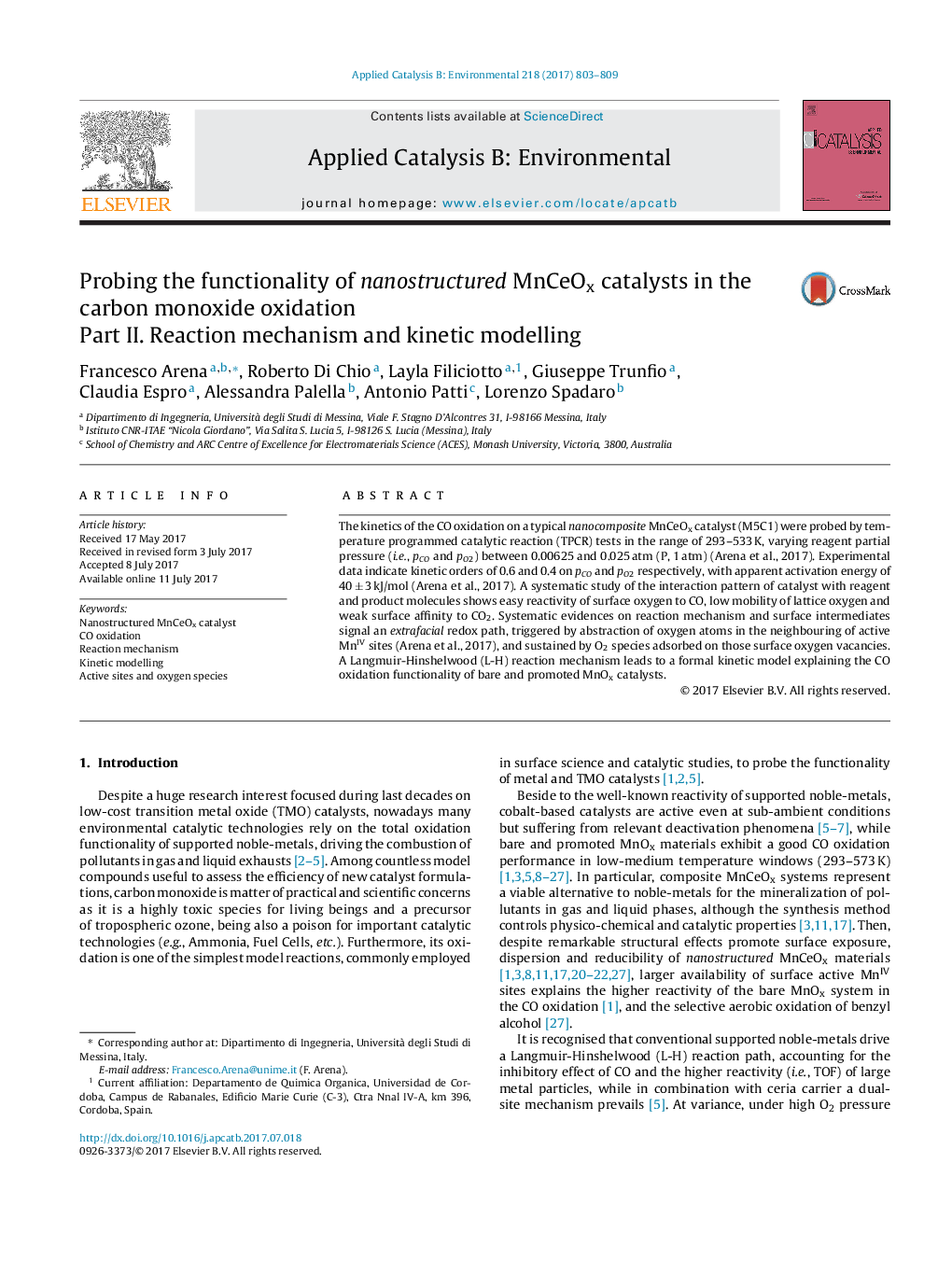| Article ID | Journal | Published Year | Pages | File Type |
|---|---|---|---|---|
| 6453854 | Applied Catalysis B: Environmental | 2017 | 7 Pages |
â¢Mechanism and kinetics of CO oxidation on a nanostructured MnCeOx catalyst are addressed.â¢Low lattice oxygen mobility and the kinetic effect of O2 rule out the MvK redox mechanism.â¢Adsorption of reagent and product species leads to various carbonate intermediates.â¢The CO oxidation proceeds via an extrafacial redox path involving adsorbed O2 species.â¢A L-H mechanism explains the reactivity of nanostructured MnCeOx catalysts.
The kinetics of the CO oxidation on a typical nanocomposite MnCeOx catalyst (M5C1) were probed by temperature programmed catalytic reaction (TPCR) tests in the range of 293-533 K, varying reagent partial pressure (i.e., pCO and pO2) between 0.00625 and 0.025 atm (P, 1 atm) (Arena et al., 2017). Experimental data indicate kinetic orders of 0.6 and 0.4 on pCO and pO2 respectively, with apparent activation energy of 40 ± 3 kJ/mol (Arena et al., 2017). A systematic study of the interaction pattern of catalyst with reagent and product molecules shows easy reactivity of surface oxygen to CO, low mobility of lattice oxygen and weak surface affinity to CO2. Systematic evidences on reaction mechanism and surface intermediates signal an extrafacial redox path, triggered by abstraction of oxygen atoms in the neighbouring of active MnIV sites (Arena et al., 2017), and sustained by O2 species adsorbed on those surface oxygen vacancies. A Langmuir-Hinshelwood (L-H) reaction mechanism leads to a formal kinetic model explaining the CO oxidation functionality of bare and promoted MnOx catalysts.
Graphical abstractDownload high-res image (178KB)Download full-size image
